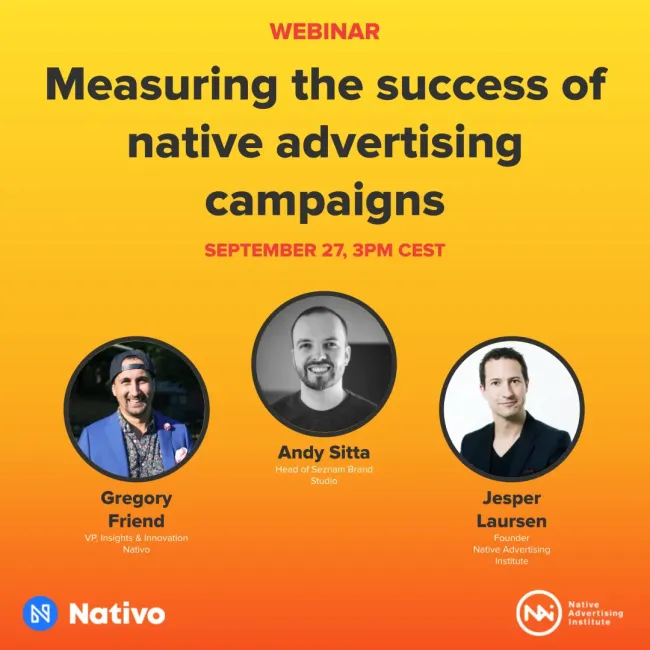
 Details
Details
Creating content that converts can be a tremendously a challenging task. Discover some useful tips for crafting content that attracts and converts, every time.
Before we delve into how to create content for your brand that attracts and converts users, the question, “what is content creation?” must be answered. Well, content creation is the construction and publication of digital media. Content creation is the making of all the stuff you see, react to, and engage with across the internet. It’s the pictures and videos you laugh and cry to on YouTube; the thousand-word articles that move you to share your political views on Facebook; the stories of people who need help that prompt you to donate on GoFundMe. It’s the infographics of statistics you see on LinkedIn and the collections of photos on Pinterest that make you want to renovate your room and reinvent your style.
The reason marketers are always saying content is king is because content is literally the stuff that connects businesses with their audience. Content helps companies make impressions, foster leads, and drive business by converting users. Overall, 72% of marketers agree that content marketing increases engagement and increases lead counts. According to DemandMetric, content marketing costs 62% less than traditional marketing efforts and yields three times the leads. The crown atop content’s head is well deserved and this monarch is a steadfast ruler who isn’t going anywhere anytime soon. So it’s best to bend the knee and kiss the ring now!
in the duration of viewable impressions, and they shouldn’t be treated alike, as if each has the same impact in making meaningful and lasting connections. Viewability measures whether your ad appears on a screen, but it fails to tell you if someone has actually seen it or if any level of engagement has occurred.
Meanwhile, marketers are paying a premium for it, despite 25% of UK digital advertising executives being unsure of how the IAB even defines a viewable ad—19% think it means more than 50% of the pixels appearing on-screen for more than 3 consecutive seconds. Given that it is so important that an ad is seen for it to have an effect, the industry needs a new benchmark.
In this blog post, we’ll go over content creation for brands with examples that demonstrate how different types of content will help your users convert.
Content Strategy
Before you start to make a bunch of infographics and videos and publish them on social media, it’s important to have a content strategy. So much of the digital space is currently oversaturated with endless images, clips, and comments that if you go in and just start publishing your content without a strategy, it will likely get drowned out. In fact, 78% of content marketers have reported creating a content strategy and 70% of marketers say their efforts were more successful as a result. Having a content strategy will not only ensure your team is creating content for the right people, but also that its being seen by the right people.
In order to produce the best strategy for your brand, here are some content creation guidelines and factors to consider:
Buyer Personas
Crafting a buyer persona is basically creating a super detailed and meticulously considered profile of your target audience. You want to note the age, gender, profession, salary, hobbies, interests, and even relationship status of your target audience member. The more detailed you get, the better! You can get this information by doing a bit of audience research on those who frequently buy your brand’s products. Uncover what their lifestyles are like and you can deduce what their motivations are for purchasing from your brand. This is important information because you can use it to customize your marketing efforts to suit their needs and drive more conversions.
Content Type
From your buyer personas, you can also determine what the best content type to reach your audience will be. For example, younger demographics tend to respond well to videos and images on the internet. Older demographics, on the other hand, tend to respond better to emails and text posts. Choose the kind of content you want to produce based on how well your audience will receive it.
Distribution Channels
After choosing the content type, you need to figure out where to distribute it. Choosing the correct social channel to reach your audience may feel silly, but when there are hundreds of dollars to lose or gain, is that really a chance you’re willing to take? Demographics vary with each social platform and most noticeably by age. Facebook tends to have the most robust user population, with most between the ages of 18 and 29. Facebook is also a popular social channel for the elderly, so don’t always let numbers steer you one way. Be sure to do your own research! Snapchat also has a huge reach with younger users, but even more so than Facebook. If you’re looking to reach and connect with other business professionals, LinkedIn is undoubtedly the place for your brand. Sift around the internet and see where your audience likes to hangout. Once you find the right distribution channel, start setting goals.
Content Goals
Speaking of, create goals for your team by choosing what key performance indicators (KPIs) you want to track before you publish your content. These KPIs will tell you whether or not what you’re publishing is worth your time or if you need to alter your strategy. These KPIs can be anything from likes and comments to clicks, conversions, and impressions. This data will help you refine your strategy until you achieve your desired results.
Analyze the Results
After every month, three months, quarter, year, (the choice is yours) look over your content and analyze the results. Have you hit all the goals you initially set for yourself? If so, that’s great! Set new ones and smash those out of the park as well. If not, that’s completely fine! It just means you have to go back to the drawing board and adjust your content creation workflow and strategy.
Content Formats
Content creation for social media largely involves visuals, but visual art isn’t the only type of content you can create. The internet has dozens of different content types that engage audiences and there are definitely some you probably have not even considered yet. Below are some content formats your brand can create to attract users:
- Pictures
- Videos
- Infographics
- Articles and Blog Posts
- Webinars
- Podcasts
- Email Newsletters
- Checklists
- PDF Templates
- Worksheets
- Case Studies
- Quizzes and Polls
- Surveys
- Presentations
- Statistics Reports
- GIFs
- Interviews
- Certificates and Awards
- Snail Mail
These are just some content types that will help jog your mind and create new and exciting pieces of content for your audience to enjoy. If you’re unsure of how to choose content marketing topics for your next promotion, just refer back to your buyer personas and think about how your products and services could help them.
Content Marketing with Brands
There are dozens of brands with excellent content creation examples out there on the web. We’ve compiled a few here who have shown exceptional skill in the game. From their activity and history, you can take a few lessons and apply them to your brand.
ProFlowers and Info
ProFlowers took blogging to another level, with its blog post on 151 Types of Flowers. Listed alphabetically, this comprehensive list includes everything users would ever need to know about these flowers: images, seasons, fragrance, sun needs, soil needs, height, and other features. Because of the meticulous attention to detail of this post and their other blogs, ProFlowers attracts 42% of organic traffic to their blogging site. If you want to increase your digital footprint and drive traffic to your site, consider website content creation in the form of blog posts for your audience to read and enjoy.
Girlboss, Social Media, and a new Network
When Sophia Amoruso first created Nasty Gal, she had a passion for vintage clothing and styling. The brand that started as a modest eBay store slowly but surely became a fashion empire. Then, when the company went bankrupt in 2016, she didn’t give up, but instead started a new venture. Thus, Girlboss was born: a media company turned professional networking site for women. Although the platform is still in its beta, the brand has a solid foundation of fans that is most notable on Instagram. The brand has amassed over 1.2 million followers and 16.7 million uses of the hashtag. It’s easy to see why when you look at the account and realize that all the posts are audience specific. For example, each post is either an inspirational quote made by a woman, a meme showing the grievances women face, popular feminist political views, images of strong empowered women, and all in all, stellar relatable content. Take a lesson in content creation for social media from Sophia and the team at Girlboss and create content that genuinely speaks to your audience.
GroupM and Live Streaming
If you’re active on LinkedIn and follow GroupM, you may have already been receiving notifications of their live streams. If not, this company has begun to utilize LinkedIn as a means of connecting with other business professionals and sharing industry knowledge. Most recently, Kieley Taylor, GroupM Managing Partner and Global Head of Social, was interviewed and reflected on key global social trends and key takeaways from their time in Cannes. Doing a live stream is a great way to interact and engage with your audience in real-time while reflecting on some recent events.
Coca-Cola and Personalization
That classic sweet caramel-like taste and those intoxicating bubbles are unmistakable when it comes to Coca-Cola. The red and white label is so easily recognizable, but when consumers see their names on the bottle, that level of personalization might as well just have them taking all our money. The #shareacoke tag has over 660,000 uses on Instagram, and Coke has remade this campaign over every summer since its original launch in 2011. Jaideep Kibe, Vice President, Coca-Cola Trademark, said “This program is not about the size and power of Coke… it’s about the intimacy and proximity of Coke, and the meaning behind every time you share a Coke.”
Key Takeaways
Content rules over the kingdom of the internet with its gold crown, and you have now been officially enlisted in its royal army of content creators. Hooray! Aside from all the very real issues with monarchy, it’s safe to say that this particular ruler is welcomed on all fronts. Hopefully, this blog post and the content creation examples have shown you how to create content that will attract and convert your users. Let’s go over the key takeaways one more time:
- Content creation is the making of all the stuff you see, react to, and engage with across the internet
- Preparing a content strategy will not only ensure your team is creating content for the right people, but also that it’s being seen by the right audience
- In order to create a robust content strategy, your team will need to identify your buyer personas, content types, distribution channels, and content goals
- There are dozens of different kinds of content formats; you just have to figure out which one will best appeal to your target audience
- Draw inspiration from outside your team, especially from the brands you personally love
Good luck!

